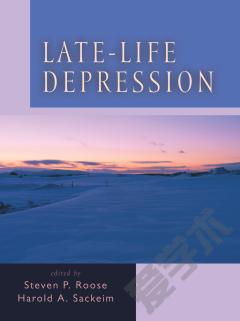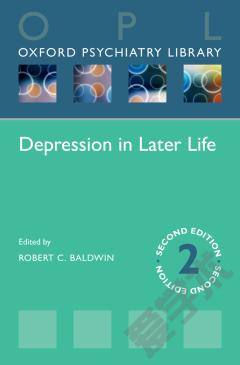Depression Care Across the Lifespan
Dedication. Acknowledgement. Preface. Introduction. Chapter 1: Causes of Depression. Epidemiology of depression. Gender and depression. What is Depression?. Causes of Depression. Recognizing the Symptoms of Depression. Depression as normal. Different Types of Depression. Major Depression. Dysthymia. Manic depression or Bipolar Disorder. Mania. Seasonal Affective Disorder (SAD). Post-natal Depression. Anxiety. Physical causes linked to depression. Beliefs about depression. Cultural beliefs about depression. Lay beliefs and Depression. Sociological beliefs. Conclusion. Reflection and Discussion. References. Chapter 2: Depression in children and teenagers. Introduction. Incidence of mental disorder in children. Causes of depression in young people. Physical conditions. Diagnosing depression in children. Associated Risk factors. Treatment of depression in children and young people. Drug Treatment. Therapies. Substance Misuse in adolescents. Cannabis. Self harm and Suicide. Self Harming Behavior. Suicide in young people. Risk factors associated with suicide. Conclusion. Reflection and discussion. References. Chapter 3: Depression throughout the adult female lifecycle. Introduction. Pre menstrual syndrome and Pre menstrual dysorphic disorder. Diagnosis of pre menstrual syndrome (PMS) and pre menstrual dysphoric disorder (PMDD). Depression in pregnancy. Anxiety and depression during pregnancy. Post partum depression. Trans-cultural studies. Predicting risk of post- natal depression. Puerperal Psychosis. Depression related to the menopause. Learning disabilities and the menopause. Conclusion. Reflection and discussion. References. Chapter 4: The Impact of Stress and Depression upon work and well being. Introduction. Causes of work related stress and depression. Bullying and harassment in the workplace. Bullying in the workplace. Depression and the ability to work. The economic impact of stress and depression in the workplace. Improving health and well being and employer?s responsibility. Men and Depression. Paternal peri-natal mental health. Unemployment and Retirement. Post traumatic stress disorder (PTSD) in men and women. Persistent symptoms experienced by PTSD sufferers. Conclusion. Reflection and discussion. References. Chapter 5: Depression in Chronic Disease and Long Term Conditions. Introduction. Depression and Coronary Heart Disease. Depression and Stroke. Depression and Chronic Obstructive Airways Disease (COPD). Depression and Renal Disease. Depression and Diabetes. Depression and Cancer. The Role of the Clinical Nurse Specialist in Palliative Care. Neurological conditions. Evidence regarding long term conditions. Conclusion. Reflection and discussion. References. Chapter 6: Depression in later life. Introduction. Causes and incidence of depression in late life. Depression and dementia. Alcohol misuse in old age. Anorexia in old age. Beliefs about Depression. The Geriatric Depression Scale-15. Management of depression in old age. Treatment. Adherence, Compliance and Concordance. Types of treatment available. Medication. Psychological Interventions. Electro Convulsive Therapy (ECT). Suicide and Older People. Morbidity and Mortality. Perceptions of care workers caring for older depressed adults. National Service Framework for Older People (NSF). Bereavement and grief. Kubler Ross Stages of Dying. Ethnicity and depression. Life Span Developmental Theories. Normal Grief Reactions. Abnormal or Complicated grief. Conclusion. Reflection and discussion. References. Chapter 7: Suicide and Self Harm. Introduction. Background on suicide. Suicide rates and Statistics. Potential reasons for reduction in reported suicide rates in England. National Strategies to Reduce Suicide. The role of the G.P in the Prevention of Suicide. Socioeconomic factors associated with suicidal behaviour. Discharge Liaison, the Role of the Community Psychiatric Nurse and the Care Programme Approach. Potential Guidelines and Recommendations on suicide prevention prior to discharge. Suicidal behaviour. People associated with higher incidence of suicide. Adolescents and young people. Suicide and Depression in adolescents with Learning Disabilities. Prisoners. Clergy. Alcohol Abuse. Psychiatric Illness associated with suicide. HIV and Aids. Older People. Antidepressants and the risk of suicidal behaviour. The Importance of Managing Suicidal Risk. Risk assessment. Suicide risk identification, assessment and action plan. No Suicide Contracts. Review of risk assessment scales. Self harm. Reasons why young people self harm. Self harm and high suicidal risk. The Professionals Role in Suicide Prevention. The Doctors Role. The Nurses Role. Conclusion. Reflection and discussion Case scenarios and key observations. References. Chapter 8: Treatment for Depression. Introduction. Antidepressants. Types of anti-depressants. SSRI's. MAOI's. Psychological Therapies. Problem solving therapy. Counselling. Cognitive Behaviour Therapy (CBT). Guided self help. Group work. Interpersonal Psychotherapy (IPT). Electro Convulsive Therapy (ECT). Exercise and dance. Electromagnetic stimulation. Compliance with treatment. Accessing treatment. Nurse Prescribing. Crisis Resolution Services. Conclusions. Reflection and discussion: Case study Scenarios. References. Chapter 9: Ethnicity and depression and mental health and learning disabilities. Introduction. Prevalence of depression by race or ethnicity. Ethnicity and diversity. Monitoring ethnicity and inequality. Depression in immigrants and ethnic minorities. Treatment of depression. Physical health, ageing and depression. Supporting race equality. Provision of services. Depression in people with learning disabilities. Low self esteem in people with learning disabilities. Leaning disabilities and Self harm. Learning disabilities and self injury. Conclusion. Reflection and discussion points. References. Chapter 10: Managing depression in primary and secondary care and evidence based practice. Introduction. 1. Evidence based care for Depression in Primary Care. Management of depression in primary and secondary care. National guidance for Depression in children and young people. Guidance on Post Traumatic Stress Disorder in Adults and Children. Patient's experience of depression and the expert patient. The Expert Patient. 2. Patient safety in mental health. National Patient Safety Agency. Root Cause Analysis. Barrier Analysis. Suicide prevention: Good practice guidelines. 3. Evidence based practice. Medicines management. Improving access to Cognitive Behavioral Therapy. 4. Mental Health Policy. National Suicide Prevention Strategy. Care Programme Approach (CPA). Screening for depression. Progress on mental health reform. Media reporting on suicide. 5. Mental health research. Conclusion. Reflection and Discussion Points. References. Index.
{{comment.content}}








 京公网安备 11010802027623号
京公网安备 11010802027623号